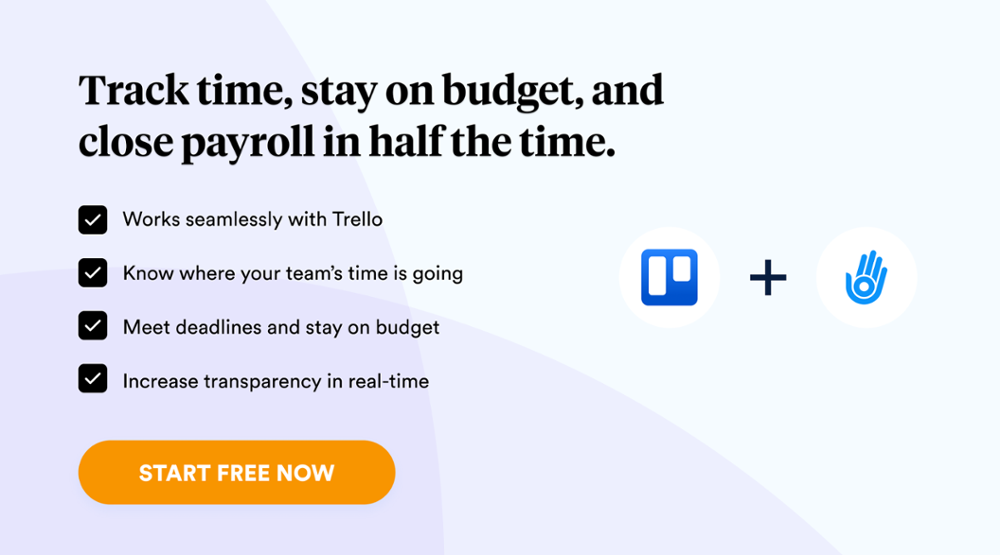With remote work and cross-functional teams becoming the new normal, project management tools are essential for streamlining tasks, boosting collaboration, and elevating productivity. Trello and Jira stand out among the myriad available tools due to their unique features and widespread use across various industries.
Which one is right for you? It all depends on your needs, project type, team size, workflow – the list goes on.
In this article, we’ll dive into a comprehensive comparison of Trello and Jira that examines their top features, ease of use, and pricing plans – everything you need to decide which tool best suits your project management needs.
Here’s a quick outline of what we’ll discuss:
- What is Trello?
- Trello Top Features
- What is Jira?
- Jira Top Features
- Jira vs. Trello Comparison
- Trello vs. Jira: Which One Should You Use?
- Final Verdict: Jira vs. Trello
What is Trello?
Trello is a widely used project and time management tool that helps teams collaborate and organize tasks in a visually appealing and intuitive way. It’s known for its flexible yet straightforward board and card system that easily lets teams track their work and progress.
Trello was launched in 2011 by Fog Creek Software, led by Joel Spolsky and Michael Pryor. The platform was later spun off as an independent company and was acquired by Atlassian, an Australian enterprise software company, in January 2017.
Trello’s simple, easy-to-understand interface and robust functionality have made it popular among businesses and individuals. It’s used for various purposes – from managing complex projects and product development pipelines to organizing simple to-do lists and personal tasks.
Trello Top Features
Trello’s flexibility makes it a hit with teams of all sizes; its feature set allows project managers to customize and tailor the tool to meet their needs. Its intuitive interface ensures that users can quickly get up and running, allowing them to focus on tasks rather than becoming bogged down in figuring out how to use the tool. The result? Teams can spend less time managing projects and more time working on them.
Let’s dive into some of the top features that make Trello stand out:
- Simple and intuitive boards, lists, and cards: Trello’s primary structure is built around boards (projects), lists (task categories), and cards (individual tasks). This simple, intuitive structure allows for easy visualization of tasks and workflow.
- Team collaboration: Trello lets you invite as many people to your board as you need, whether they are part of your team or external stakeholders. Members can add comments, attachments, and due dates to cards, making it a hub for collaboration and discussion.
- Flexible organization with tags, labels, and checklists: Cards can be tagged with labels for easy sorting and filtering. Checklists within cards allow users to break down tasks into smaller, manageable parts.
- Built-in workflow automation with Butler: Trello’s Butler feature allows users to automate tasks and processes, from setting due dates to moving cards between lists based on predefined triggers.

What is Jira?
Jira is a comprehensive project management tool developed by Atlassian, designed primarily for software development teams. Since its inception in 2002, Jira has grown to become a favorite among developers and project managers alike, especially those practicing Agile methodologies.
Jira’s robust capabilities extend beyond mere task tracking. It’s built to plan, track, and manage all aspects of the software development lifecycle. From capturing and defining requirements to tracking code changes and releasing software, Jira has tools and features to handle it all.
Jira Top Features
Jira is packed with various powerful features designed to facilitate different aspects of project management, particularly in software development. These features provide the flexibility and control to manage complex projects and processes. Here are some of Jira’s top features:
- Customizable workflows: Jira allows teams to create workflows that mirror their real-life processes. Each step in the workflow can have its fields, permissions, and notifications.
- Advanced reporting and analytics tools: Jira provides robust reporting features, including built-in reports, dashboards, and agile reporting, helping teams to track project status, identify bottlenecks, and monitor team performance.
- Complete development traceability: Jira offers an overview of the entire software development process, from requirements and user stories to code changes, build status, and testing progress. This is particularly useful in Agile development environments.
- Support for Agile methodologies: Jira Software is built specifically for Agile teams. It supports Scrum and Kanban frameworks and includes features like Agile boards, backlogs, and sprints.
- Project and issue tracking: Jira is an issue-tracking system at its core. Teams can create, track, and manage tasks and issues, making it easier to manage project progress.

Jira vs. Trello Comparison
In any comparison between project management tools, it’s crucial to remember that different teams have different needs. What works for one team might not work for another, depending on the project’s complexity, size, and the specific use case. Let’s examine Trello and Jira side-by-side to understand better their key differences and where each excels.
User Interface and Ease of Use
Trello’s user-friendly interface is one of its greatest strengths. It’s simplicity and intuitive board-list-card system allow new users to grasp its functionality quickly. On the flip side, Jira’s robustness comes with a steeper learning curve. Its interface, while packed with powerful features, can initially seem overwhelming. However, once users navigate this learning curve, Jira’s detailed interface can offer a high level of control over projects.
Task Management
Task management in Trello is visual and straightforward – tasks (cards) are created on a board and move from one list (task category) to another, reflecting their progress. On the other hand, Jira takes task management to a more detailed level. Tasks (issues) can have complex, customizable workflows that map accurately to a team’s real-world processes, accommodating more complex project requirements.
Collaboration Features
Trello and Jira encourage team collaboration, allowing comments and file attachments on their tasks. In Trello, conversations are more visible as they occur directly on the cards. In Jira, however, these discussions are part of the issue detail view, keeping the main interface less cluttered but requiring additional clicks to view.
Integration Capabilities
Trello and Jira both offer robust integration capabilities. Trello’s Power-Ups and Jira’s marketplace apps allow connections with platforms like Slack, Google Drive, Confluence, etc. This enhances the functionality of both tools, making them even more powerful and adaptable to various workflows.
Pricing
Trello and Jira both offer a free plan. Jira’s free plan is limited to ten users from the same organization, whereas Trello’s free plan is available for any number of users.
Trello Pricing Plans
- Free: $0, for an unlimited number of users
- Standard: $6 per user/month
- Premium: $12.50 per user/month
- Enterprise: $17.50 per user/month
Jira Pricing Plans
- Free: $0, free for up to ten users
- Standard: $7.75 per user/month
- Premium: $15.25 per user/month
Customizability
Jira offers high customizability, especially regarding workflows, fields, and reporting. This can be extremely valuable for teams needing a tool to adapt to their specific processes. Trello, on the other hand, while not as customizable as Jira, still offers a fair amount of flexibility through labels, checklists, and Power-Ups, which can be more than sufficient for many teams and projects.
Each aspect brings unique strengths to Trello and Jira, making them suited for different teams and projects. The key is understanding your team’s specific needs and choosing the tool that best meets those requirements.
Trello vs. Jira: Which One Should You Use?
The decision between Trello and Jira often boils down to the complexity of your projects and your team’s specific requirements. Both are powerful tools, but each has unique characteristics that make them better suited for specific scenarios.
When to Use Trello?
Trello might be your go-to choice if:
- You seek an intuitive, easy-to-use project management tool requiring minimal setup and learning time.
- Your projects involve straightforward workflows, or you prefer a visual representation of tasks and progress.
- Your team is made up of members with varying technical skill levels. Trello’s simplicity makes it accessible to everyone.
- You need a flexible tool to handle various projects, from content calendars and personal to-do lists to full-scale project pipelines.
- Your team requires a free or low-cost solution with the option to add more features as needed.
When to Use Jira?
Jira might serve your needs better if:
- Your projects are complex, with multiple stages and transitions, requiring advanced workflow customization.
- Your team follows Agile methodologies, like Scrum or Kanban, and needs a specific tool.
- Your team primarily comprises tech-savvy members who require detailed tracking and management features.
- You are part of a software development team needing features like code integration, development tracking, and sprint planning.
- You are willing to invest in a more expensive solution that provides robust reporting, analytics, and integration capabilities.
Final Verdict: Jira vs. Trello
Trello and Jira are powerful project management tools catering to different needs. Trello’s user-friendly interface makes it a perfect choice for smaller teams or those starting their project management journey. At the same time, Jira, with its advanced features and customizable workflows, is ideal for larger groups managing complex projects, particularly in software development.
You can significantly enhance both capabilities by integrating them with advanced projects and time-tracking apps like Day.io. Whether your team is smaller, preferring a simpler interface like Trello’s, or more technical and needing the robustness of Jira, integrating with Day.io can take your project management to the next level, providing a comprehensive project overview and advanced analytics.
